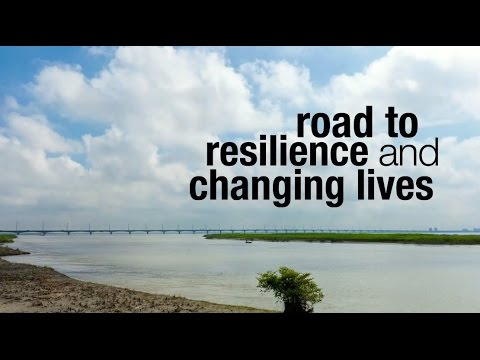By American Psychological Association
To Experience The Road to Resilience is how people deal with difficult events that change their lives? The death of a loved one, loss of a job, serious illness, terrorist attacks, and other traumatic events: these are all examples of very challenging life experiences. Many people react to such circumstances with a flood of strong emotions and a sense of uncertainty, which can cause stress in peoples daily lives.
Yet people generally adapt well over time to life-changing situations and stressful conditions. What enables them to do so? It involves resilience, an ongoing process that requires time and effort and engages people in taking a number of steps.
This brochure is intended to help readers with taking their own road to resilience. The information within describes resilience and some factors that affect how people deal with hardship. Much of the brochure focuses on developing and using a personal strategy for enhancing resilience.
Experience The Road To Resilience – WHAT IS RESILIENCE?
Resilience is the process of adapting well in the face of adversity, trauma, tragedy, threats, or even significant sources of stress – such as family and relationship problems, or workplace and financial stressors. It means “bouncing back” from difficult experiences.
Research has shown that resilience is ordinary not extraordinary. People commonly demonstrate resilience. One example is the response of many Americans to the September 11, 2001 terrorist attacks and individuals’ efforts to rebuild their lives.
Being resilient does not mean that a person doesn’t experience difficulty or distress. Emotional pain and sadness are common in people who have suffered major adversity or trauma in their lives. In fact, the road to resilience is likely to involve considerable emotional distress.
Resilience is not a trait that people either have or do not have. It involves behaviors, thoughts, and actions that can be learned and developed in anyone.
Experience The Road To Resilience – SOME FACTORS IN RESILIENCE:
A combination of factors contributes to resilience. Many studies show that the primary factor in resilience is having caring and supportive relationships within and outside the family. Relationships that create love and trust, provide role models, and offer encouragement and reassurance help bolster a person’s resilience.
Several additional factors are associated with resilience, including:
The capacity to make realistic plans and take steps to carry them out.
A positive view of ourself and confidence in your strengths and abilities.
Skills in communication and problem solving.
The capacity to manager strong feelings and impulses.
All of these are factors that people can develop in themselves.
Experience The Road To Resilience – STRATEGIES FOR BUILDING RESILIENCE:
Developing resilience is a personal journey. People do not all react the same way to traumatic and stressful life events. An approach to building resilience that works for one person might not work for another. People use varying strategies.
Some variation may reflect cultural differences. A person’s culture might have an impact on how he or she communicated feelings and deals with adversity – for example, whether and how a person connects with significant others, including extended family members and community resources, With growing cultural diversity, the public has greater access to a number of different approaches to building resilience.
Some or many of the ways to build resilience in the following pages may be appropriate to consider in developing your personal strategy.
Experience The Road To Resilience – 10 WAYS TO BUILD RESILIENCE:
Make connections. Good relationships with close family members friends, or others are important. Accepting help and support from those who care about you and will listen to you strengthens resilience. Some people find that being active in civic groups, family-based organizations, or others local groups provides social support and can help with reclaiming hope. Assisting others in their time of need also can benefit the helper.
Avoid seeing crises as insurmountable problems. You can’t change the fact that highly stressful events happen, but you can change how you interpret and respond to these events, Try looking beyond the present to how future circumstances may be a littler better. Note any subtle ways in which you might already feel somewhat better as you deal with difficult situations.
Accept that change is a part of living. Certain goals may no longer be attainable as result of adverse situations. Accepting circumstances that cannot be changed can help you focus on circumstances that you can alter.
Move toward your goals. Develop some realistic goals. Do something regularly – even if it seems like a small accomplishment – that enables you to move toward your goals. Instead of focusing on tasks that seem unachievable, ask yourself, “What’s one thing I know I can accomplish today that helps me move in the direction I want to go?”
Take decisive actions. Act on adverse situations as much as your can. Take decisive actions, rather than detaching completely from problems and stresses and wishing they would just go away.
Look for opportunities for self-discovery. People often learn something about themselves and may find that they have grown in some respect as a result of their struggle with loss. Many people who have experienced tragedies and hardships have reported better relationships, greater sense of personal strength even while feeling vulnerable, increased sense of self-worth, a more developed spirituality, and heightened appreciation for life.
Nurture a positive view of yourself. Developing confidence in your ability to solve problems and trusting your instincts helps build resilience.
Keep things in perspective. Even when facing very painful events, try to consider the stressful situation in a broader context and keep a long-term perspective. Avoid blowing the event out of proportion.
Maintain a hopeful outlook. An optimistic outlook enables you to expect that good things will happen in your life. Try visualizing what you want, rather than worrying about what you fear.
Take care of yourself. Pay attention to our own needs and feelings. Engage in activities that you enjoy and find relaxing. Exercise regularly. Taking care of yourself helps to keep your mind and body primed to deal with situations that resilience.
Additional ways of strengthening resilience may be helpful. For example, some people write about their deepest thoughts and feelings related to trauma or other stressful events in their life. Meditation and spiritual practices help some people build connections and restore hope. The key is to identify ways that are likely to work well for you as part of your own personal strategy for fostering resilience.
LEARNING FROM YOUR PAST: “Some Questions to yourself”:
Focusing on past experiences and sources of personal strength can help you learn about what strategies for building resilience might work for you. By exploring answers to the following question about yourself and your reactions to challenging life events, you may discover how you can respond effectively to difficult situation in your life.
Consider the following when journeying the Road To Resilience:
–What kinds of events have been most stressful for?
–How have those events typically affected me?
–Have I found it helpful to think of important people in my life when I am distressed?
–To whom have I reached out for support in working through a traumatic or stressful experience?
–What have I learned about myself and my interactions with others during difficult times?
–Have I been able to overcome obstacles, and if so, how?
–What has helped make me feel more hopeful about the future?
STAYING FLEXIBLE:
Resilience involves maintaining flexibility and balance in your life as you deal with stressful circumstances and traumatic events. This happens in several ways, including:
Letting yourself experience strong emotions, and also realizing when you may need to avoid experiencing them at times in order to continue functioning.
Stepping forward and taking action to deal with our problems and meet the demands of daily living, and also stepping back to rest and re-energize yourself.
Spending time with loved ones to gain support and encouragement, and also nurturing yourself.
Relying on others, and also relying on yourself.
PLACES TO LOOK FOR HELP:
Getting help when you need it is crucial in building your resilience. Beyond caring family members and friends people often find it helpful to turn to:
Self-help and support groups. Such community groups can aid people struggling with hardships such as the death of a loved one. By sharing information, ideas, and emotions, group participants can assist one another and find comfort in knowing that they are not alone in experiencing difficulty.
Books and other publications by people who have successfully managed adverse situations such a surviving cancer. These stories can motivate readers to find a strategy that might work for them personnaly.
Online resources. Information on the web can be a helpful source of ideas, though the quality of information varies among sources. The APA Help Center, online at www.helping.apa.org is a good site to check.
For many people, using their own resources and the kinds of help listed above may be sufficient for building resilience. At times, however, an individual might get stuck or have difficulty making progress on the road to resilience.
A licensed mental health professional such as a psychologist can assist people in developing an appropriate strategy for moving forward. It is important to get professional help if you feel like you are unable to function or perform basic activities of daily living as a result of a traumatic or other stressful life experience.
Different people tend to be comfortable with somewhat different styles of interaction. A person should feel at ease and have good rapport in working with a mental health professional or participating in a support group.
CONTINUING ON YOUR JOURNEY:
To help summarize several of the main points in this article, think of resilience as similar to taking a raft trip down a river.
On a river, you may encounter rapids, turns, slow water, and shallows, As in life, the changes you experience affect you differently along the way.
In traveling the river, it helps to have knowledge about it and past experience in dealing with it. Your journey should be guided by a plan, a strategy that you consider likely to work well for you.
Perseverance and trust in your ability to work your way around boulders and other obstacles are important. You can gain courage and insight by successfully navigating your way through white water. Trusted companions who accompany you on the journey can be especially helpful for dealing with rapids, upstream currents, and other difficult stretches of the river.
You can climb out to rest alongside the river. But to get to the end of your journey, you need to get back in the raft and continue.
– Experience The Road To Resilience










